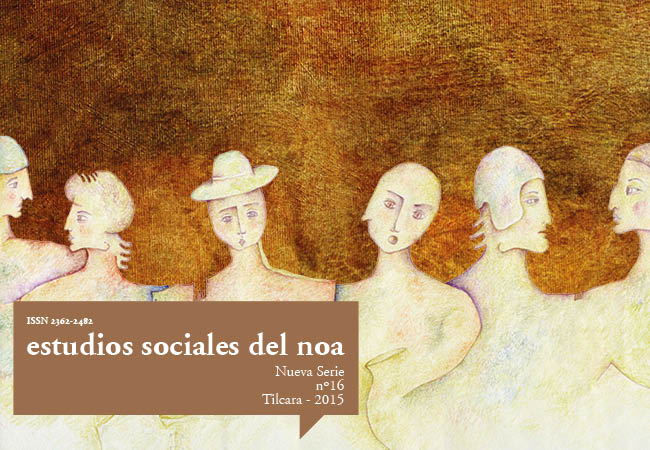The paleoenvironmental archives on the eastern edge of the Puna and their responses to natural and anthropogenic changes during the Holocene Epoch, Argentine Northwest
Abstract
In this paper, we present the results of sediment accumulations from the valleys of the eastern highlands in Jujuy, for the Holocene Epoch. The selected deposits (22º 06´S, 65º 28´N) cover the time span of 9000-2350 cal yr BP. Palynological, heavy mineral, and textural analyses, were carried out and complemented by studies of radiocarbon, modern pollen, and the origin of minerals. Current data show pollen groups from the shrub steppes (from the puna), local indicators of humidity and anthropogenic disturbance; the dominant textural classes of the more friable surface materials correspond to fine and medium grain sands, with green hornblende occurring in the highest percentage. We discuss the Holocene paleoenvironment of the valley, one characterized by shallow vegetated riverbeds, an arid-semiarid climate, and regional shrub steppes of the Puna. The abundance of green hornblende stands out and is correlated with the pollen zones of the grasslands and with local humidity. Fine sediments with chlorite correspond to increases in indicators of local moisture. The changes in morphodynamics in the middle and late Holocene Epoch, reduced sedimentation rates, the sustained trend of increased runoff, and the local variations in moisture indicators were produced by variations in precipitations and / or increased human activity.Downloads
Authors who publish in this journal accept the following conditions:
- The authors or translators retain the copyright and assign to the journal the right of first publication, with the work registered under the Creative Commons Attribution-NonCommercial-ShareAlike 4.0 International, which allows third parties to use what published as long as they mention the authorship of the work and the first publication in this journal.
- Authors may enter into other independent and additional contractual agreements for the non-exclusive distribution of the version of the article published in ESNOA (eg, include it in an institutional repository or publish it in a book) as long as they clearly indicate that the work was first published in this journal.












